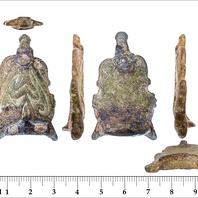
Viking Objects
Stirrup-Strap Mount (LIN-CFA7D4)
This example of an Anglo-Scandinavian cast copper-alloy stirrup-strap mount is classed as Williams Class A, Type 1A. It is decorated with a symmetrical pair of moulded beasts shown in profile in the Ringerike/Urnes style.
Read More

Viking Names
Snelland
The derivation of Snelland, in the Wraggoe Wapentake of Lincolnshire, is uncertain. The first element is either the Old Norse male personal name Snjallr or the Old English male personal name Snell, the second element is Old Norse lundr ‘a small wood’.
Read More
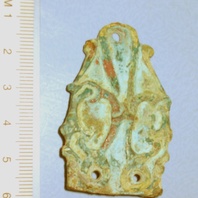
Viking Objects
Stirrup Strap Mount (NARC-C34373)
This cast copper-alloy stirrup strap mount is decorated with Ringerike style ornamentation and is classed under Williams Class A Type 1.
Read More
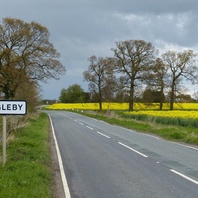
Viking Names
Ingleby
Ingleby, historically in the West Riding of Yorkshire, takes its name from the Old English ethnonym Engle ‘the Angles, later the English’ and Old Norse by ‘a farmstead, a village’. There is also an Ingleby in Derbyshire, close to the Viking winter camp at Repton, and the site of a unique Viking Age cremation cemetery. The exact implications of such a name are not yet fully understood and are the subject of ongoing work by Dr Jayne Carroll of the Institute for Name-Studies, University of Nottingham. Ingleby in Lincolnshire is now a joint parish with Saxilby.
Read More
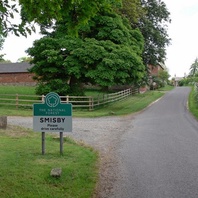
Viking Names
Smisby
The first element of Smisby, in the Repton and Gresley Hundred of Derbyshire, is either Old Norse smiðr ‘smith’ or it Old English cognate smið, the second element of the place-name is Old Norse by ‘a farmstead, a village’.
Read More
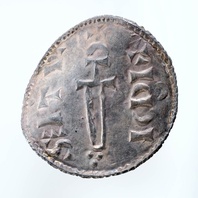
Viking Objects
Sihtric Caoch Silver Penny (CM.863-2002)
A sword and cross type silver penny of Sihtric Caoch (Sihtric Cáech) minted for the Viking kingdom of Northumbria. Sihtric Caoch was the Scandinavian ruler of Dublin from 917-920 CE and subsequently the ruler of Northumbria from 921-927 CE. It is not certain why he left Ireland. The Irish annals state that it was ‘through the grace of God’ and do not elaborate on the politics behind his departure. After the establishment of the Danelaw, some Viking leaders decided to mint their own coins to solidify their legitimacy in the eyes of the local populace. This created a hybrid economy where some members of the Danelaw used bullion and others used coins. This coin was part of a hoard of twelve coins found at Thurcaston between 1992 and 2000. The coins are Anglo-Saxon, Arabic and Viking issues, and show the diverse and wide-ranging contacts between societies at this time. The hoard was probably deposited c.923-925 CE, approximately five years after Leicester had been retaken by Mercia (c.918 CE). They indicate that a bullion economy was still operating in the Danelaw as late as the 920s. This suggests that the reconquest did not manage to institute Anglo-Saxon practices such as a monetary economy immediately.
Read More
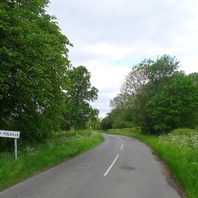
Viking Names
Ashby Folville
Ashby Folville, in the East Goscote Hundred of Leicestershire, is likely an Anglo-Scandinavian name coming from Old English æsc ‘ash-tree’ and Old Norse by ‘a farmstead, a village’. Some spellings may show influence of Old Norse eski ‘a place growing with ash-trees’ or even Old English esce ‘a stand of ash-trees’ on the first element. The suffix Folville comes from the de Folevill family who held the manor from the mid twelfth century until at least 1368.
Read More
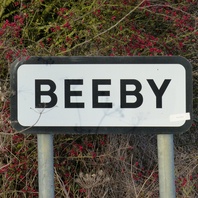
Viking Names
Beeby
Beeby, in the East Goscote Hundred of Leicestershire, is an Anglo-Scandinavian hybrid from Old English beo ‘a bee’ and Old Norse by ‘a farmstead, a village’. The high valuation of Beeby in the Domesday Book has led scholars to believe that it was originally an Anglian settlement taken over and renamed by Scandinavians.
Read More
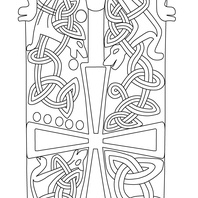
Viking Designs
Details from the Hickling Hogback
Detail drawings showing elements of the designs on the hogback stone, a type of Anglo-Scandinavian grave cover, from St Luke’s Church, Hickling, Nottinghamshire.
Read More

Viking Names
Ravensdale Park
Ravensdale Park, in the Appletree Hundred of Derbyshire, clearly derives its name from either the bird or a person with a name that corresponds to that of the bird, but its linguistic origin is difficult to pin down because of the similarities between Old Norse and Old English. The first element could be Old Norse hrafn ‘raven’, or the Old Norse male personal name Hrafn, or Old English hræfn ‘raven’, or the Old English male personal name Hræfn. The second element is either Old Norse dalr ‘valley’ or Old English dæl ‘a pit, a hollow; later a valley’. It was one of the parks of Duffield Frith hence the later affix ‘park’. In the Nottinghamshire place-name Ranskill, the first element is more likely to be Old Norse as the second element is also in that language, but the difficulty of deciding between the bird and the personal name Hrafn is the same.
Read More
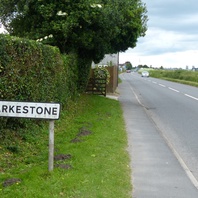
Viking Names
Swarkestone
Swarkestone, in the Repton and Gresley Hundred of Derbyshire, is derived from a Scandinavian male personal name which appears in Old Danish as Swerkir, in Old West Norse as Sorkir and in Old Swedish as Swerker. This is combined with Old English tun ‘farm, settlement’ and it is thus a hybrid name, as so many in the Trent Valley.
